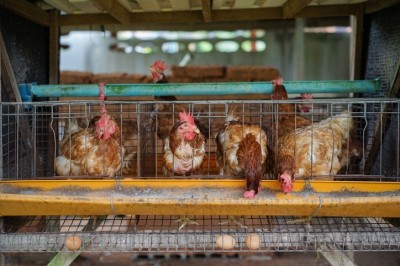US feed manufacturer Cache Commodities cited for numerous violations

The FDA sent Cache Commodities Incorporated a warning letter in March.
That communication documents the many alleged breaches of Current Good Manufacturing Practices (CGMP) relating to the production of animal feed and medicated feed at Cache Commodities' mill that the FDA inspector recorded during his December investigation of the plant.
The agency said its investigator’s general observation was that practices at Cache Commodities’ facility for holding raw ingredients, formulating, weighing, mixing, and holding finished feed are not sufficient to ensure the production of safe animal food.
“Our investigator received a similar impression of conditions at your facility during our 2016 inspection, which resulted in a Form FDA 483 being issued to you.”
Background
The US regulator conducted the December 2017 feed mill inspection as a follow-up to a meeting it held with representatives of Cache Commodities in June 2017. That meeting was in response to the death of a large number of pheasant chicks diagnosed with rickets in early 2017. The chicks had consumed a medicated feed product produced by Cache Commodities, which the FDA said was deficient in vitamin D, calcium, and phosphorus.
A previous FDA inspection of Cache Commodities’ milling operations, which concluded in November 2016, followed the death of several hundred rabbits. The animals in question had been diagnosed with vitamin D toxicity after consuming rabbit feeds produced by Cache Commodities. Those feeds contained excessive levels of vitamin D, said the US regulator.
“Your food has been linked to the deaths of numerous animals on at least two separate occasions,” wrote the FDA. “You should be aware that as management of the establishment, it is your responsibility to ensure that all operations in the manufacturing, processing, packing, and holding of animal food are conducted in accordance with the CGMP requirements.”
The company was given a 15-business day window to respond to the FDA’s letter.
“Your response should include documentation of the corrections (including how you intend to address systemic problems) your firm has taken.”
Cache Commodities did not respond to our request for comment on the matter.
The FDA told Cache Commodities Incorporated: 'Failure to promptly correct these violations may result in legal action without further notice, including, without limitation, seizure and injunction.'
Reported violations and company response
The FDA said its December 2017 inspection of the Utah feed mill found samples of a crumbled feed for layers did not comply with label guarantees for phosphorus, sodium and calcium. The US agency alleged that samples of two medicated feeds at the facility had drug levels outside of the permissible limit, and that there was a labeling issue in relation to another product.
“Specifically, the indications for use on your labeling are for use of amprolium in calves, and the caution statement includes the caution language required for calves instead of the correct indications for use, feeding directions and caution statements required when this drug is fed to pheasants,” the agency said.
During the inspection, investigators noted that the company failed to handle raw materials and other feed ingredients in ways that limit the potential for contamination or deterioration.
“He [the investigator] also observed bags of ingredients covered in so much dust or other ingredients that their labels were difficult to read,” the FDA said. “Spilled beet pulp located in Shed 1 was partially covering a pallet of unknown ingredient bags. Some of the ingredient bags were open and their contents were intermixed with beet pulp.”
The poor storage conditions were a repeat observation from the agency’s 2016 investigation, stressed the FDA.
On January 4, 2018, Cache Commodities sent a letter outlining its responses to the FDA's December 2017 findings. It said it had since cleaned up the spilled ingredients, that it expected to have a solution to the beet pulp spillage problem by the end of April, and that it had taken other steps to control dust within the plant.
The FDA also reported that buildings and structures at the facility were found to be in a state of disrepair, and that its inspector had observed insulation to be deteriorating and hanging from the ceiling over raw ingredients and finished animal food.
The company told the FDA in January that it was in the process of fixing the insulation problem and that it had already taken several steps to deal with the structural issues noted.
“Our investigator observed piles of trash and debris, old equipment parts and tires, overgrown vegetation, piles of old animal food ingredients, open buckets of oil, multiple pallets and totes of expired animal food which were punctured or torn open and spilling their contents, stored throughout the grounds of your facility,” the FDA report continued. “These conditions have the potential to contaminate animal food ingredients and finished products, as well as serving to attract and harbor pests.”
The inspector also said he found a dead raccoon and live cats in the milling building and that birds could access the micro-ingredient shed, the agency said. “He observed animal tracks and apparent raccoon, cat, bird, and rodent droppings and urine throughout the entire facility, including in spilled corn and around and on finished bagged animal food, totes of finished animal food, micro-ingredient tubs, and bags of ingredients.”
Some bags and totes of finished animal feed also were found open and exposed to the environment, alleged the FDA. “Your January 4, 2018 response indicates that you believe some of the construction and building repair, including repairs to the broken doors and a thorough cleaning will help resolve this issue. We note that similar commitments were made in your December 6, 2016 response to our 2016 inspection, and that the corrections promised at that time have not been implemented, or have not remained in place. We will evaluate your progress at our next inspection.”
The company also failed to use adequate procedures to identify, store, maintain and control medicated ingredients and medicated feeds, it said.
“Your batching and mixing operations are not adequate to ensure that your medicated feed products consistently contain the right amount of medication, as specified by your formulas and product labeling,” the agency said.
The amount of medication used in medicated feeds is not recorded in a sufficient manner, added the FDA.
The company also told that new employee training was in progress to address the issues raised including the handling of medicated products and that it was in the process of establishing a position of FDA compliance director.















